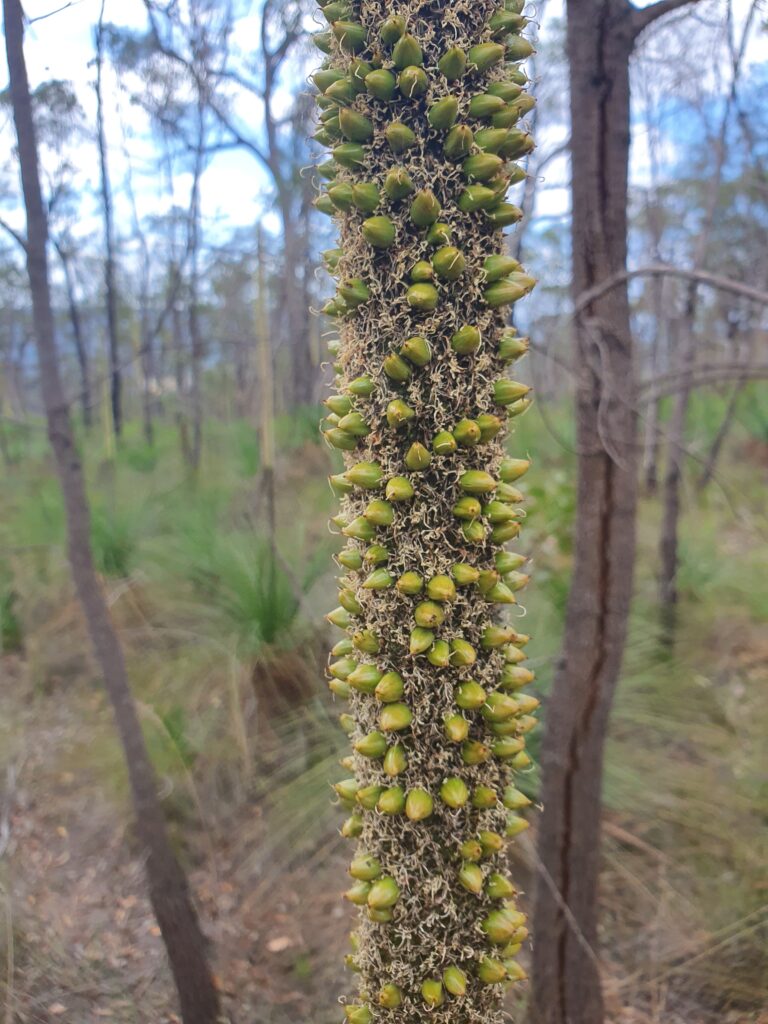According to Plants Rescue one flowering stalk of the Xanthorrhoea johnsonii variety can produce up to 10,000 seeds, but according to Borsboom (2005) it can also be as little as 60 seeds if exposed to a lot of natural predators. We have personally seen an average of about 100 - 1,000 seeds per stalk but hope to see more in future.
Grasstrees that flower mid-season tend to produce more seeds with most of them located in the middle third of the spike.
Grasstrees are ready to throw seeds or 'pop' when the seeds turn black and the stalks turn more of a brown colour. Whilst green leave the stalk and seed pods alone and allow to mature. According to Borsboom (2005) seed maturation can take up to 3 months.
Once seed pods are black you can wait for the pods to open up naturally and then harvest the tiny black seeds weighing at around 10mg, or you can cut the stalk and leave it in an area that gets morning sun. Once birds show interest then it is ready to harvest.
We've noticed that the seed pods facing the morning sun tend to open first. When we find stalks that have one side of the seeds opened and the other not, we cut the stalk and put it in a sun room with the unopened seed pods facing the morning sun. These pods tend to open within a day to a week.
However, we've also had stalks in a dark room, in water, and in sugar-water to help determine if there is any one method that works better than another. All of these seeds have opened. The theory is that the stalks recognize they are in danger of dying and so they 'pop' the seed pods as quickly as possible for propagation. We noticed the same thing with stalks that were blown over by the wind, lying half-attached to the tree on the ground. They pop very quickly. Again, a likely defense mechanism to allow seeds to get released and repopulate what is lost.
We have been cutting stalks to avoid birds and grubs ravaging the seeds, and for us it was interesting to know that seeds can still open up even weeks after you cut the stalk. But they also close again when it's cloudy or raining, just to open again once the sun comes out. This has been a very interesting observation.
If you leave the cut stalks for more seed pods to open we suggest that you have a white cover or sheet underneath. It is easier to shake the stalks and have the seeds fall out on a white sheet and collect them from there. The seeds are pretty delicate so whether you pick them from the sheet or directly from the seed pod you may want to use tweezers.
The seeds are small and flat with pods carrying anywhere from 1 - 4 seeds at a time from our observation although studies report on average 3 seeds per pod.
When it comes to X. johnsonii seed dispersal does not seem to be dictated by animals or an active despersal mechanism, but instead relies on wind and rain, otherwise falling close to the plant.


